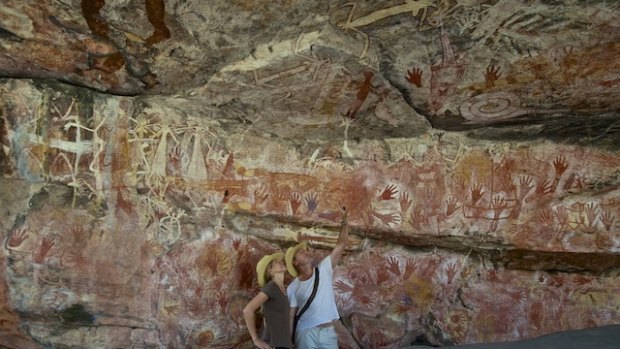This was published 9 years ago
Arnhem Land, Northern Territory: Travel guide and things to do

Arnhem Land, NT
Arnhem Land is an area of 97 000 sq. km in the north-eastern corner of the Northern Territory. It extends from Port Roper on the Gulf of Carpentaria around the coast to the East Alligator River where it adjoins Kakadu National Park. The region was named by Matthew Flinders after the Dutch ship Arnhem which explored the coast in 1623.
The coast has one of the longest histories of exploration of any area in Australia. It is likely that the first Aborigines, making their way across the Indonesian archipelago some 40-50 000 years ago, arrived on the Arnhem Land coast. Certainly by the fifteenth century the coast was being regularly visited by Indonesian and Malaccan sailors and traders.
In 1644 Abel Tasman sailed along the coast and in 1803 Matthew Flinders, as part of his circumnavigation of Australia, charted the complex coastline. The inland areas were explored by Ludwig Leichhardt, who travelled through the area on his 1844-45 journey from Moreton Bay to Port Essington, and David Lindsay, the South Australian surveyor, who, in 1883, was commissioned to explore the central and eastern sections of Arnhem Land. He met with strong resistance from the local Aborigines. At one point his party was attacked by over 300 men.
The area continued to be explored throughout the nineteenth century but much of it was inaccessible. The northern coast, for example, is characterised by mangrove swamps and tidal rivers. Inland from the mangrove swamps are areas of tropical jungle, swamps and gorges. Thus the Aborigines of the region, who have lived in Arnhem Land for at least the last 25 000 years, tend to live near the coast where fish are abundant and life is relatively easy. The reserve is noted for its rich examples of rock art and Aboriginal artefacts. The stone axes found in the reserve are some of the oldest in existence.
The first mission station was established in Arnhem Land in 1908 by the Church Mission Society. In 1916 the Northern Territory Administration bought Paddy Cahill's cattle station at Oenpelli and in 1920 the 2400 sq. miles around the station were converted into an Aboriginal reserve. At the same time the Methodist Overseas Mission established a mission on Galiwinku. The mission at Galiwinku, a large island 500 km from Darwin, is now one of the largest communities in Arnhem Land with a population of over 1000 people.
In 1931, after pressure from a number of organisations, Arnhem Land became an Aboriginal reserve. A number of mission stations, with populations hovering around 500 people, now exist in the area. Notable are the ones at Maningrida, Milingimbi, Numbulwar and Yirrkala.
During World War II over 5000 servicemen were stationed on Gove Peninsula (qv) and after the war prospectors found vast deposits of bauxite in the area. In the early 1970s Narbarlek prospected for uranium in the reserve and in 1979 permission was granted to mine yellow cake.
There are a large number of books on the Aborigines of the Northern Territory but a good starting point is People of Two Times: The Aborigines of Australia's Northern Territory which is a 16 page illustrated brochure available from the Northern Territory Tourist Commission. It has a bibliography for those travellers interested in reading further. A recommended starting point is Arnhem Land: Its History and its People by the noted anthropologists Ronald M and Catherine H Bernt.
Things to see
Visiting Arnhem Land
During the dry season, and with the appropriate documentation from the Northern Land Council, it is possible to drive into Arnhem Land. The current attitude of the Northern Land Council to such journeys is that there must be some reason beyond sightseeing or simply wanting to travel around the edges of the continent. Consequently applications to travel through Arnhem Land are not easy to obtain. It is private property and should be respected as such. For more information of traveling to Arnhem Land check out:http://www.travelnt.com
Sign up for the Traveller Deals newsletter
Get exclusive travel deals delivered straight to your inbox. Sign up now.